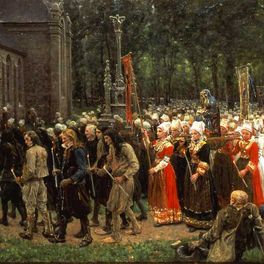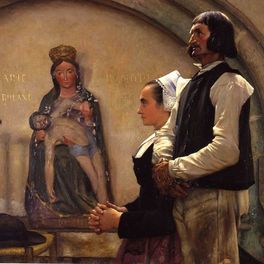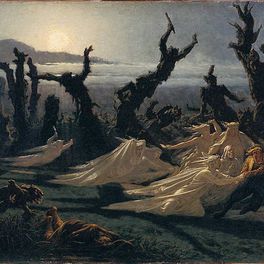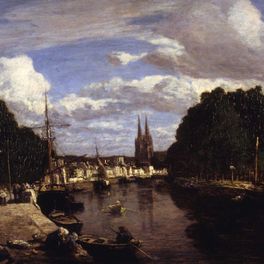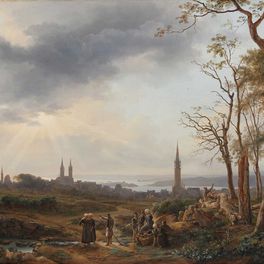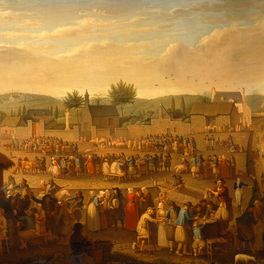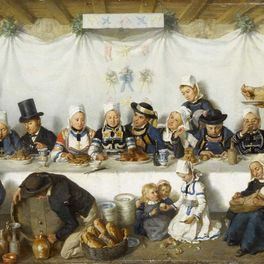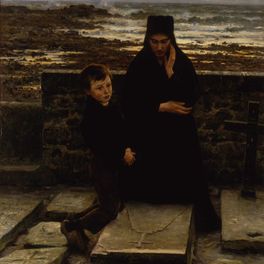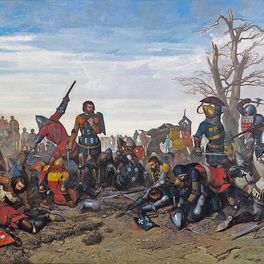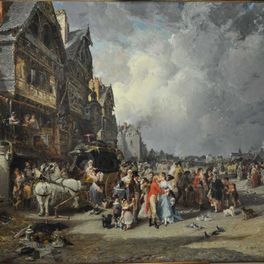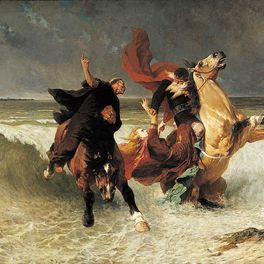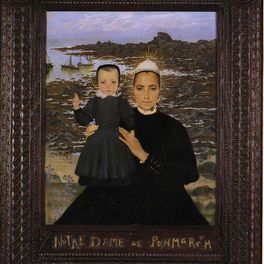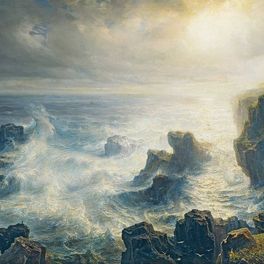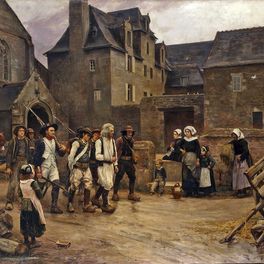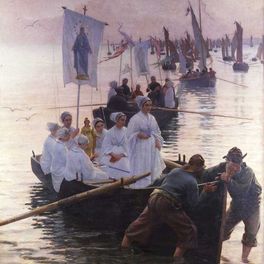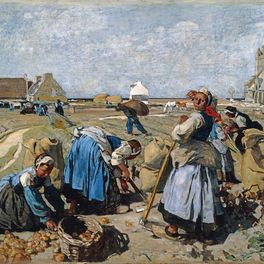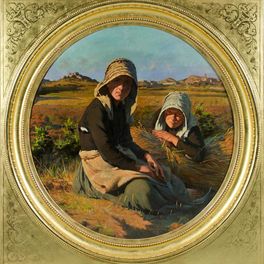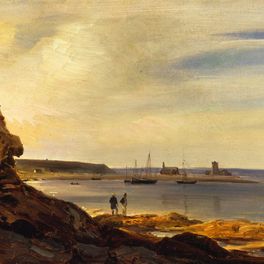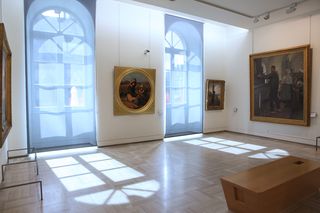Works inspired by Brittany
Jean-Marie de Silguy was not particularly interested in paintings with a Breton theme, but Eugène Boudin’s work, Le Port de Quimper (the Port of Quimper), was an exception.
When it opened, the museum’s officials, the painter and ceramist Alfred Beau and the parliamentarian and journalist Louis Hémon, agreed to put together a Breton collection. They were very attached to painters such as Alfred Guillou and Théophile Deyrolle, based in Concarneau, who preferred to paint picturesque scenes following academic techniques. They felt that Breton traditions were disappearing and that artists were duty bound to preserve their memory. They undertook to buy paintings at every Paris Salon, often in large format, or to obtain French state allocations.
This became the most important collection in all the museums in Brittany. It covers various sources of inspiration, from romantic landscapes to scenes of genre such as fishing ports, through to legends, the history of the Counter-Revolution, daily life in small mediaeval towns and the famous pardons in the Cornouaille region, which then attracted painters from all over the world.
The death of Alfred Beau in 1907 signalled the end of this fascinating period. Following the First World War, these large canvases looked outdated in the face of modernity and the Breton people themselves tended to reject them. For the past thirty years there has been a renewal of interest in these works and the museum has made every endeavour to complete the collection, for example by compiling significant sets of works by Yan’ Dargent or Jules Noël. Certain titles, such as de Gradlon (the Flight of Gradlon), de l’île de Sein (the Widow from the Ile de Sein), les Lavandières de la nuit (the Washerwomen of the night) or le Pardon de Kergoat (the Pardon at Kergoat) are often reproduced and exhibited.
At the turn of the century, painters such as Charles Cottet and Lucien Simon explored the traditional themes of Brittany, while distancing themselves from academic techniques. They collaborated with painters from the beginning of the 20th century, who continued to visit Brittany.

